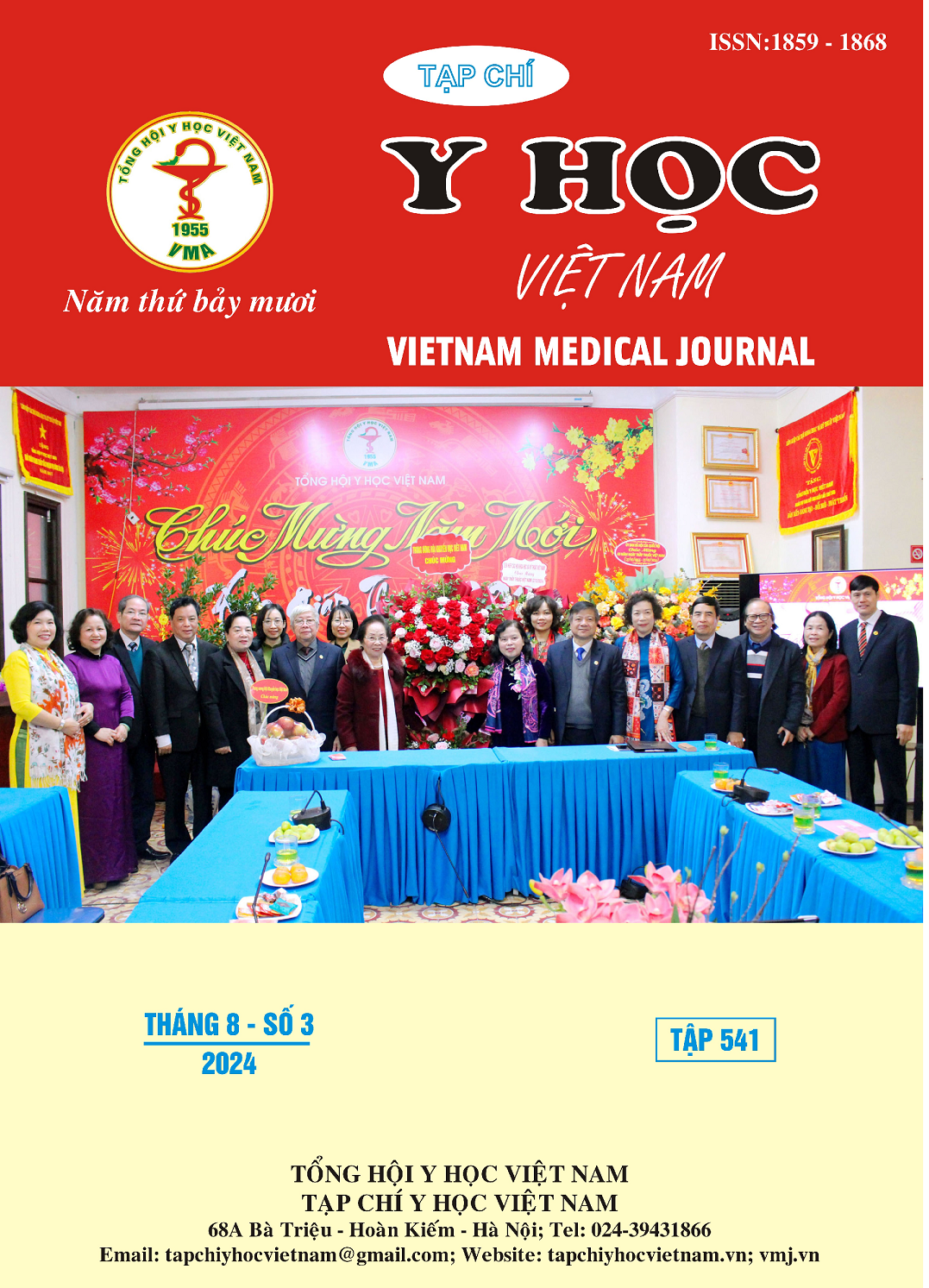CLINICAL, PRECLINICAL CHARACTERISTICS AND TREATMENT RESULTS OF CHILDREN WITH OSTEOMYELITIS AT PEDIATRICS CENTER, BACH MAI HOSPITAL
Main Article Content
Abstract
Objective: Describe the clinical and paraclinical characteristics of children with osteomyelitis. Evaluate treatment results and factors related to the disease such as medical history and injury. Subjects and methods: Prospective, descriptive, cross-sectional study conducted on 46 osteomyelitis patients, at the Pediatric Center, Bach Mai Hospital. Results: The ratio of boys/girls is 2,1:1. The average age is 11.3 years old. The most common clinical manifestations are pain (97.8%), swelling at the injury site (78.3%), and limited movement (80.4%). The tibia and femur are most commonly injured bones. The most common pathogen is Staphylococcus aureus. Tests that help confirm the diagnosis are leukocytosis (69.6%), increased CRP (59.1%), and diagnostic imaging (bone lesions appear on MRI earlier than X-ray). All children received antibiotic treatment. Parenteral antibiotics used according to the antibiogram are mainly Vancomycin, accounting for 76.1%. Linezolid (30.4%) is used when children have allergic symptoms (rash) after using Vancomycin. 02 cases received solely oral treatment. The remaining 44 patients received intravenous antibiotic therapy for an average of 24.7 days. The average length of hospital stay was 25.61 ± 12.63; at least 6 days and at most 62 days. 13 children had surgical intervention, accounting for 28.3%. Conclusion: Osteomyelitis often appears in boys with non-specific symptoms such as fever, pain, swelling and restricted mobility of the affected limb. Timely diagnosis is necessary to prevent complications and stop acute osteomyelitis from turning into chronic. Additional multicenter studies are required to examine geographical variations in the causative organism, therapy, and features of pediatric osteomyelitis in order to provide clinical practice guidelines.
Article Details
Keywords
Osteomyelitis, children, clinical, paraclinical, treatment, pediatrics
References
2. Bộ Y tế (1975), Hằng số sinh học người Việt Nam, Nhà xuất bản Y học, Hà Nội.
3. Popescu B., Tevanov I., Carp M., et al. (2020). Acute hematogenous osteomyelitis in pediatric patients: epidemiology and risk factors of a poor outcome. J Int Med Res, 48(4), 0300060520910889.
4. Thingsaker E.E., Urbane U.N., and Pavare J. (2021). A Comparison of the Epidemiology, Clinical Features, and Treatment of Acute Osteomyelitis in Hospitalized Children in Latvia and Norway. Medicina, 57(1), 36.
5. Chiappini E., Camposampiero C., Lazzeri S., et al. (2017). Epidemiology and Management of Acute Haematogenous Osteomyelitis in a Tertiary Paediatric Center. International Journal of Environmental Research and Public Health, 14(5), 477.
6. Wang S., Wang M., Ning B., et al. (2023). Clinical characteristics, pathogenesis, treatment and prognosis of osteomyelitis in children: a retrospective study from a single center. World J Emerg Med, 14(4), 312–316.
7. Chen J.-A., Lin H.-C., Wei H.-M., et al. (2021). Clinical characteristics and outcomes of culture-negative versus culture-positive osteomyelitis in children treated at a tertiary hospital in central Taiwan. Journal of Microbiology, Immunology and Infection, 54(6), 1061–1069.
8. Chang Y., Chen T.M., Guo L.Y., et al. (2022). [Analysis of clinical features and poor prognostic factors of acute hematogenous osteomyelitis in children]. Zhonghua Er Ke Za Zhi, 60(8), 756–761.
9. Wang X.B., Samant N., Searns J., et al. (2023). Epidemiology and clinical characteristics of pediatric osteomyelitis in northern California. World J Pediatr, 19(6), 609–613.
10. Thái Văn Bình (2016), Nghiên cứu điều trị viêm xương tuỷ xương đường máu trẻ em, Luận văn tiến sĩ, Học viện Quân Y.


